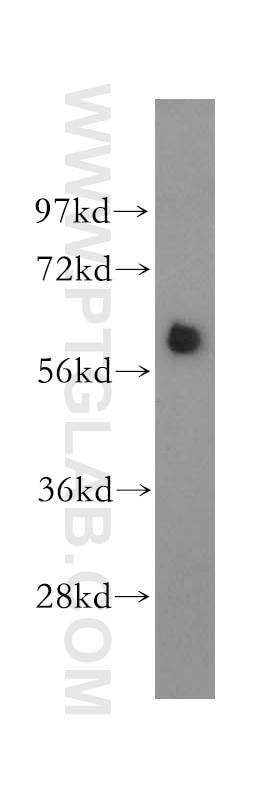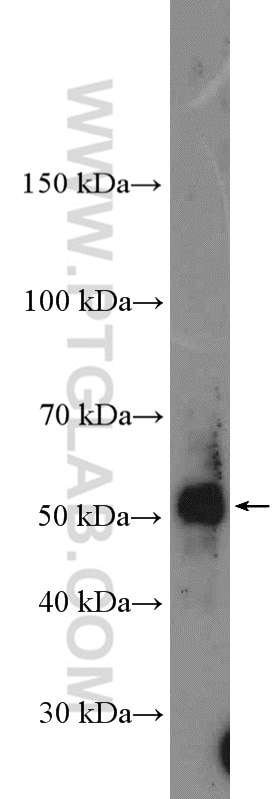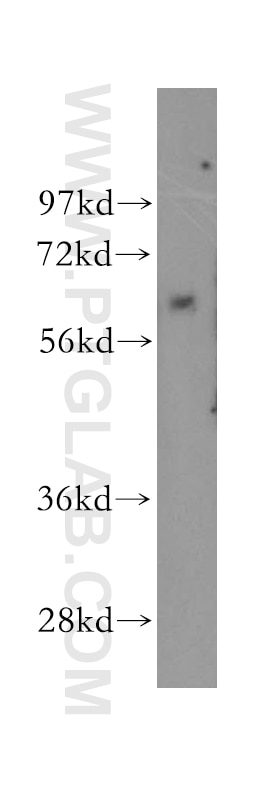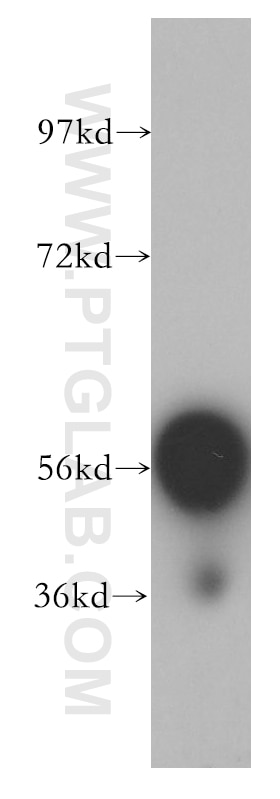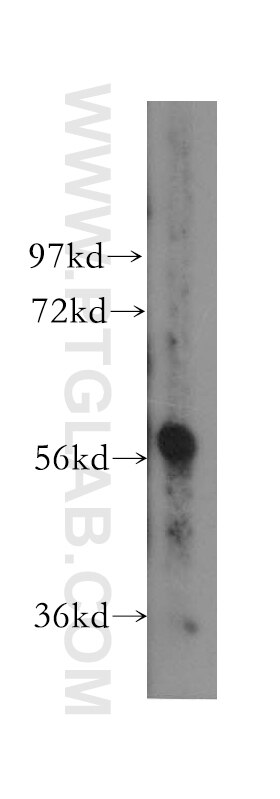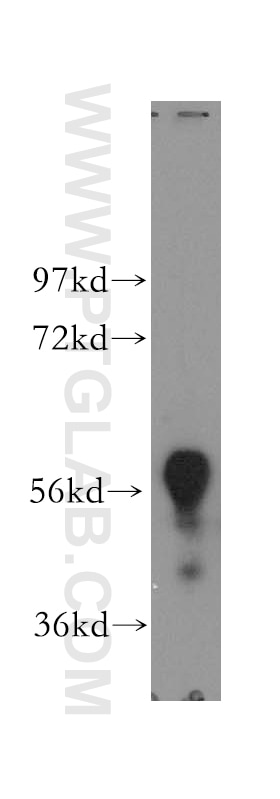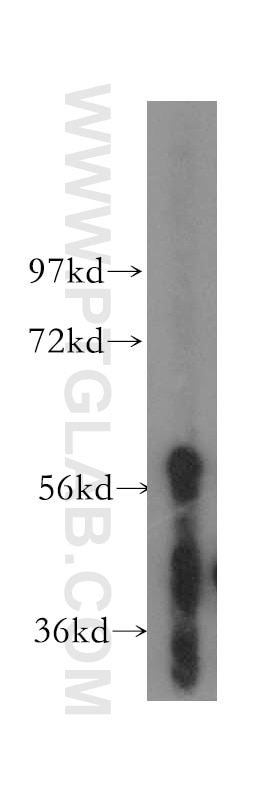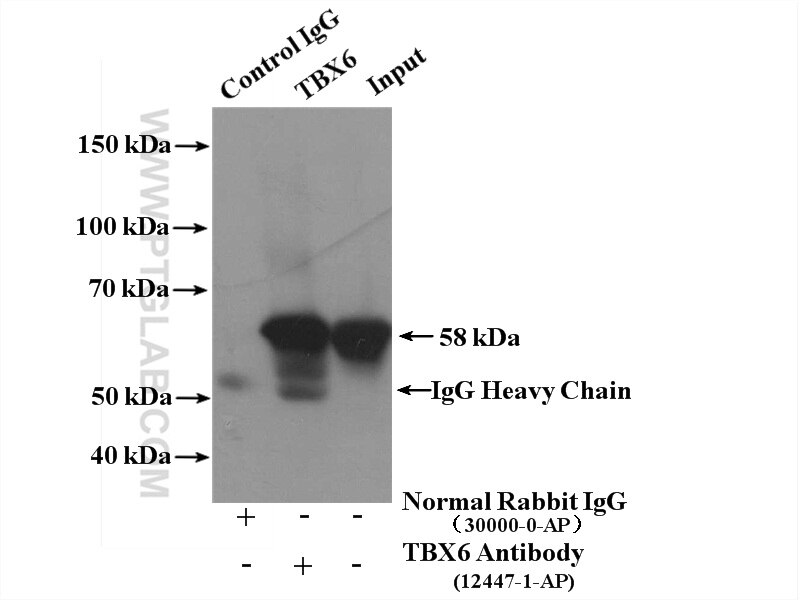TBX6 Polyclonal antibody
TBX6 Polyclonal Antibody for WB, IP, ELISA
Host / Isotype
Rabbit / IgG
Reactivity
human, mouse
Applications
WB, IP, ELISA
Conjugate
Unconjugated
Cat no : 12447-1-AP
Synonyms
Validation Data Gallery
Tested Applications
| Positive WB detected in | HeLa cells, A375 cells, A549 cells, human lung tissue, human placenta tissue, mouse lung tissue, Raji cells |
| Positive IP detected in | human placenta tissue |
Recommended dilution
| Application | Dilution |
|---|---|
| Western Blot (WB) | WB : 1:500-1:2000 |
| Immunoprecipitation (IP) | IP : 0.5-4.0 ug for 1.0-3.0 mg of total protein lysate |
| It is recommended that this reagent should be titrated in each testing system to obtain optimal results. | |
| Sample-dependent, Check data in validation data gallery. | |
Product Information
12447-1-AP targets TBX6 in WB, IP, ELISA applications and shows reactivity with human, mouse samples.
| Tested Reactivity | human, mouse |
| Host / Isotype | Rabbit / IgG |
| Class | Polyclonal |
| Type | Antibody |
| Immunogen | TBX6 fusion protein Ag3050 |
| Full Name | T-box 6 |
| Calculated Molecular Weight | 436 aa, 47 kDa |
| Observed Molecular Weight | 58 kDa |
| GenBank Accession Number | BC026031 |
| Gene Symbol | TBX6 |
| Gene ID (NCBI) | 6911 |
| RRID | AB_2200836 |
| Conjugate | Unconjugated |
| Form | Liquid |
| Purification Method | Antigen affinity purification |
| Storage Buffer | PBS with 0.02% sodium azide and 50% glycerol pH 7.3. |
| Storage Conditions | Store at -20°C. Stable for one year after shipment. Aliquoting is unnecessary for -20oC storage. 20ul sizes contain 0.1% BSA. |
Background Information
TBX6, also named as T-box transcription factor TBX6, is a 436 amino acid protein, which localizes in the nucleus and forms a dimeric complex with DNA. T-box transcription factor that plays an essential role in the determination of the fate of axial stem cells: neural vs mesodermal. The calculated molecular weight of TBX6 is 47 kDa, but the modified TBX6 is about 58 kDa.
Protocols
| Product Specific Protocols | |
|---|---|
| WB protocol for TBX6 antibody 12447-1-AP | Download protocol |
| IP protocol for TBX6 antibody 12447-1-AP | Download protocol |
| Standard Protocols | |
|---|---|
| Click here to view our Standard Protocols |
